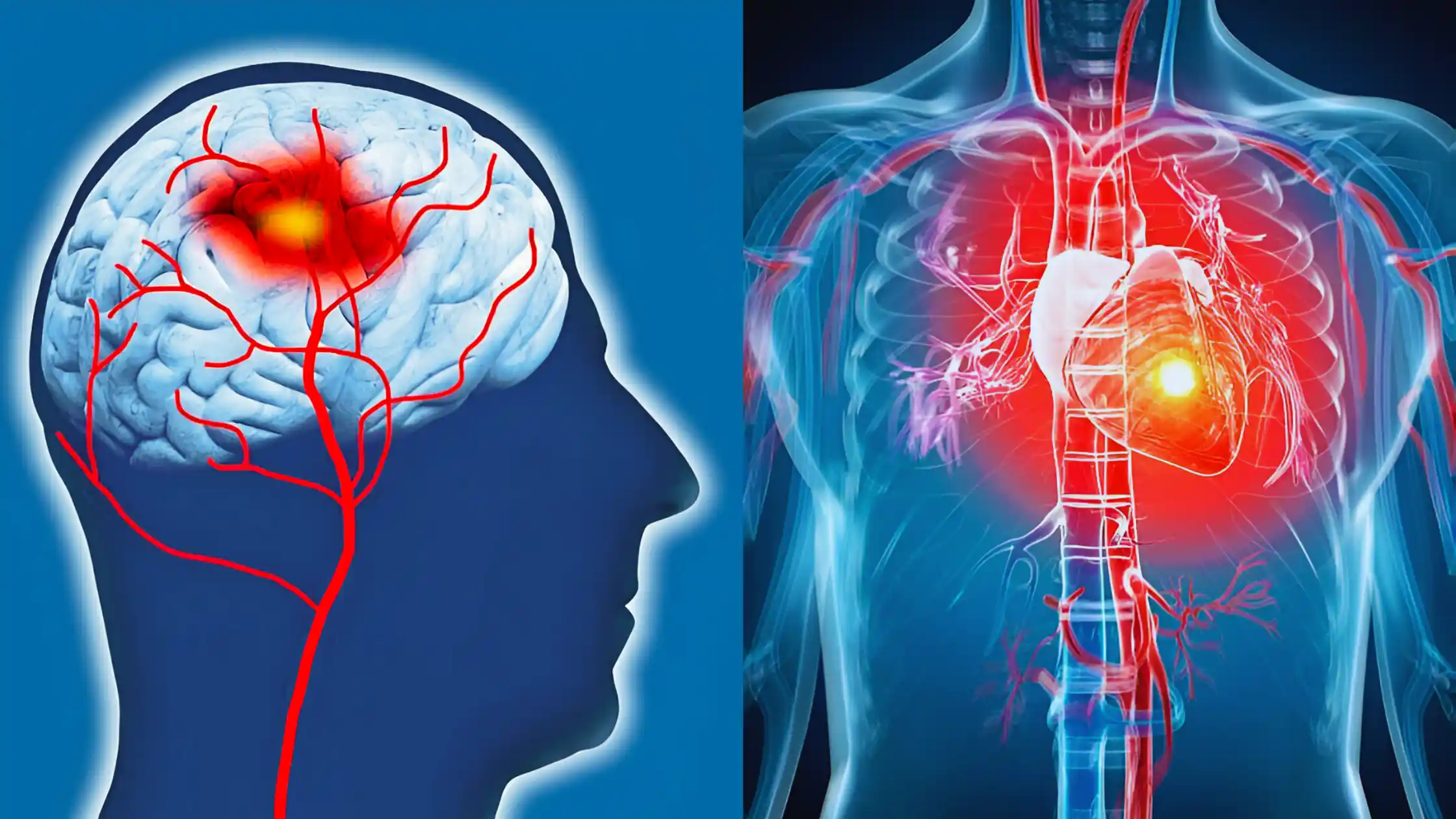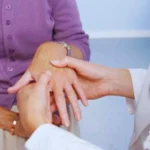Difference between Stroke and Heart Attack
- July 21, 2025
- admin

Stroke and heart attack are both critical situations but the effects of both are dissimilar and can be observed in distinct symptoms. During a stroke, no blood reaches the brain either because a clot has formed in the blood, which prevents the flow of blood towards the brain (ischemic stroke) or when the blood vessel is ruptured and it disseminates blood (hemorrhagic stroke). A heart attack, on the contrary is brought about by disruption of the supply of blood to the heart muscles by a block or plaque formation on the coronary arteries. Although they are not identical, these conditions are a result of issues in the vessels and require rapid treatment since failure to attend to them can cause some serious illness or even death.
Each condition has different symptoms. A stroke may cause a sudden numbness or weakness (in one part of the body usually), speech difficulty, confusion, vision difficulties, or a bad headache amongst others. Nevertheless, chest pain or pressure, any trouble breathing, feelings that may be felt in one arm, more arms, back, neck, or jaw are the common symptoms of a heart attack. Both conditions can be diagnosed early by different means: CT or an MRI is common in stroke, whereas doctors mainly use ECGs, blood tests, and angiography in cases of heart attacks. Strokes are commonly dealt with by clot-busting drugs or surgical procedures but heart attacks are always dealt with by medicine, small tubes known as stents or surgical solutions to correct the heart functions.
Diseases such as heart attack and stroke are some of the diseases that are provoked by a similar cause such as high cholesterol, high blood pressure, smoking, diabetes and lack of activity. Exercise, eating healthy food, being tobacco-free and controlling other health conditions are essential things that can set in and prevent these diseases. The knowledge of the differences between the conditions is useful to accelerate the medical process, contribute to the successful outcome of the patient, and sometimes save the life of a person.
What is a Stroke?
A stroke is defined as an emergency condition in medical practice where the flow of blood to part of the brain becomes interrupted and thus the brain cells in the affected region lack oxygen and nutrients. This obstruction can occur when a clot (known as an ischemic stroke) blocks blood or when blood flows into the brain or some adjacent tissue (one has a hemorrhagic stroke). Brain cells continue to die out within a few minutes without treatment and their long-lasting disability or even death is the consequence.
What is Heart Attack?
Myocardial infarction or a heart attack occurs when the vessel supplying blood to the heart (coronary circulation) is blocked. This congestion achieves a situation whereby blood that is full of oxygen cannot reach a certain part of the heart and leads to the destruction of the heart muscle. Failure to reestablish the blood flow in time will cause the compromised part of the heart irreparable damage which may include dire health conditions or the patient dying unexpectedly.
Key Difference Between Heart Attack & Stroke
The stroke and the heart attack have the same cause which is the interrupted blood flow, but the contrast is the organ that becomes a victim. A heart attack is one condition that affects the heart, whereas a stroke attacks the brain. They are both medical emergencies needing immediate attention, but symptoms and treatments, as well as outcomes, can vary significantly.
Heart Attack and Stroke – Major Causes
Causes of a Heart Attack
The coronary arteries that supply the heart muscle with oxygen-enriched blood become blocked leading to the main cause of heart attack. The most well-known underlying condition is atherosclerosis (a sequence of fatty buildup or clogging of the arteries walls). A blood clot (thrombus) may develop as a result of the rupture of a plaque and block the artery cutting the blood supply to a part of the heart. Such oxygen loss influences the heart muscles and can lead to severe heart failure or death unless treatment is availed.
Causes of a Stroke
There are a number of definitions regarding how a stroke can take place.The most common is the so-called ischemic stroke that develops due to a clot in any of the blood vessels that supply the brain. Through either process a clot may become locally lodged or transferred to another region of the body, e.g., the heart, in which case it is called an embolism (causing an embolic stroke). Less commonly, a hemorrhagic stroke will be realized when a weakened capillary wall breaks, thus causing internal bleeding inside the brain tissue or beyond the tissue.
Role of Thrombosis and Embolism
Another major factor that leads to strokes and heart attacks is thrombosis (a clot that forms in place) as well as embolism (a moving clot). During heart attack, the coronary artery is commonly blocked by thrombosis. A thrombus or embolus may halt the blood supply to the brain in the case of strokes. Although they are both clot-related, the major distinction is where and how the blockage occurs.
Symptoms of Heart Attack and Stroke
Heart Attack Symptoms
- Pain in the chest or the feeling of discomfort (pressure, tightness or squeezing)
- Pain extending to arms, neck, jaw, back or stomach
- Difficulty in breathing without chest pain
- Cold sweat
- Vomiting or nausea
- Feeling light-headed or dizzy
- Fatigue (in women particularly)
- Feeling of anxiety or doom centrality
Stroke Symptoms
- Sudden numbness or weakness, especially on one side of the body (face, arm, or leg)
- Difficulty in speaking or understanding speech
- Vision problems in one or both eyes (blurred or double vision)
- Sudden confusion or trouble understanding
- Sudden severe headache with no known cause
- Loss of balance, coordination, or dizziness
- Paralysis or inability to move parts of the body
Heart Attack vs. Stroke Symptoms
|
Symptom |
Heart Attack |
Stroke |
|
Chest pain/discomfort |
Common |
Rare |
|
Radiating pain (arm/jaw/back) |
Often present |
Rare |
|
Shortness of breath |
Common |
Not typical |
|
Sweating/nausea/lightheadedness |
Common |
Occasionally, with a severe stroke |
|
Numbness or weakness (one side) |
Uncommon |
Very common |
|
Difficulty speaking |
Rare |
Common |
|
Vision problems |
Rare |
Common |
|
Sudden severe headache |
Rare |
Especially in hemorrhagic stroke |
|
Loss of balance/coordination |
Rare |
Common |
Shared Risk Factors (Both Stroke & Heart Attack)
Obesity, lack of physical exercise, smoking, hypertension, and elevated cholesterol level ( Both Stroke & Heart Attack). These are contributing to the development of both of these, as they all harm blood vessels and cause an even worse flow of blood:
- High blood pressure (hypertension)
- Hyperlipidemia
- Smoking and tobacco use
- Poor diet and Obesity
- Diabetes
- Lack of exercise and sitting down
- Excessive alcohol use
- Age (the older the more risky)
- Family history of cardiovascular disease
Unique Risk Factors for Stroke
The factors are more related to the types of stroke (mainly ischemic or hemorrhagic):
- Irregular heartbeat (atrial fibrillation)
- History of Transient Ischemic previously (TIA or mini stroke)
- Brain aneurysm or arteriovenous malformation (AVMs)
- Disorders of blood clotting
- Dealing with some drugs (e.g., the birth control pills used together with smoking)
- Females are more prone to develop it throughout their lives, when they are pregnant or taking hormone treatment
Unique Risk Factors for Heart Attack
All these are related to heart attacks to a greater extent as they influence the state of the heart and coronary arteries:
- Coronary artery disease (CAD)
- High levels of stress or anxiety
- Too much alcohol consumption or use of stimulant drugs (e.g. cocaine)
- Metabolic syndrome
- Sleep apnea
- Men have a slightly higher risk at a younger age
Potential Complications of a Heart Attack
A heart attack may cause some serious complications, particularly in cases where treatment is not taken in time:
- Heart failure – permanently weakens the pumping of blood by the heart.
- Arrhythmia – Irregular heartbeat that can be life-threatening.
- Cardiogenic shock – A severe fall in blood pressure as a result of failure in pumping by the heart.
- Valve problems – It is possible to damage the heart valves.
- Sudden cardiac arrest – The Heart ceases abruptly, usually happens as a result of arrhythmia.
- Sudden cardiac arrest – Higher risk of future attacks if lifestyle and treatment are not managed.
Potential Complications of a Stroke
Strokes can have many life-changing, long-term effects, depending on the part of the brain that was affected:
- Weakness or paralysis usually occurs on one side of the body.
- Language and communication issues, such as speech or language impairments and aphasia or slurred speech.
- Mental impairment, including memory loss, confusion or trouble thinking.
- Emotional changes, including depression or anxiety.
- Loss of coordination and balance increases the risk of falls.
- Difficulty swallowing
- Incontinence or other body control problems..
Which Condition More Often Leads to Long-Term Disability?
Both conditions, heart attack and stroke are life-threatening, more often stroke results in chronic disability. The reason is that brain is directly impacted by strokes since it is the center of control of movements, speech, and thoughts. A large number of stroke survivors have to undergo the rehabilitation process over long periods to restore their basic abilities while others end up with permanent disabilities. Instead, survivors of the heart attack might heal more completely, but they are still at risk of encountering heart failure and multiple cardiac problems.
Importance of Emergency Medical Care
Heart attacks as well as strokes are time-sensitive emergencies. The faster an individual is done with medical assistance, the better his/her chances of survival and recovery are. The delays may cause permanent heart or brain damage with a great risk of death or lifelong incapacity. The symptoms should be detected in time and a call to the emergency line has to be made to avoid any deaths and reduce the complications.
Time-sensitive treatments
Heart Attack:
When a heart attack occurs, every second counts. Here, the goal is to restore blood flow to the heart as quickly as possible to prevent permanent damage. They may be treated by:
- Clot-dissolving drug (thrombolytic) reperfusion therapy
- Percutaneous coronary intervention (angioplasty and stenting)
- Medications such as aspirin and nitroglycerin are used to reduce damage.
Stroke:
When it comes to a stroke, time is everything — the quicker the treatment, the greater the chances of stroke recovery and rehabilitation.
- In the treatment of ischemic stroke (a blockage due to a clot), clot-dissolving medication, such as tPA (tissue plasminogen activator) must be given within 3-4.5 hours of the onset of symptoms
- For hemorrhagic stroke, surgical procedures might be consequential to prevent the bleeding
- The right treatment path cannot be determined without early brain imaging (CT/MRI)
Acronyms for Quick Recognition
F.A.S.T. (for Stroke):
- Face drooping
- Arm weakness
- Speech difficulty
- Time to call emergency services
CHEST (for Heart Attack – informal memory aid):
- Chest discomfort
- Heavy sweating
- Exhaustion or fatigue
- Shortness of breath
- Tightness or pain radiating to arms/neck/jaw
Prevention Strategies
Lifestyle Modifications
- Swapping their lifestyles to healthy lifestyles is one of the best things that people can do to prevent a heart attack and stroke. The core strategies are the following:
- Eating a balanced diet, has lots of fruits, vegetables, whole grains, lean protein and healthy fats, with strict limitation of salt, sugars, and saturated fats.
- Engage in at least 75 minutes of weekly moderate-intensity physical activity, that’s slightly more than 10 minutes a day!
- Stop smoking and give up using any tobacco which will greatly decrease the chances of having a vascular disease.
- Reducing alcohol consumption to the moderate stage.
- Being in a healthy weight range can reduce the strain on the heart and the brain.
Regular Health Check-ups
Routine medical visits help to detect and manage the risk factors and prevent their degrading problems at the earliest stage:
- Monitor the blood pressure, sugar and cholesterol.
- Be screened with such conditions as atrial fibrillation particularly to prevent stroke.
- Enquire about the family history of cardiovascular/cerebrovascular disease.
However, find a way of getting early treatment just in case infirmities are discovered, although you are feeling fine.
Managing Chronic Conditions
- The current health condition has to be properly managed to avoid complications:
- Treat hypertension using drugs, healthy eating, and a healthy lifestyle.
- Treat diabetes to maintain levels of blood glucose at a healthy level.
- Manage high cholesterol level through changes in diet, physical activity and perhaps drugs.
- Adhere to prescriptions to treat heart illness or circulatory problems to avoid relapses or aggravation of the conditions.



